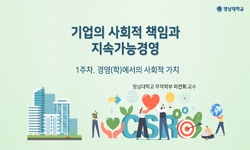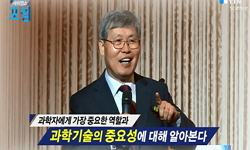The church rapidly grew after acceptance of Christianity in Korea. However the major church leaders discuss about the Christian Crisis Theory with the proving evidence of phenomenon that a number of church members and the offering donation amount in a...
http://chineseinput.net/에서 pinyin(병음)방식으로 중국어를 변환할 수 있습니다.
변환된 중국어를 복사하여 사용하시면 됩니다.
- 中文 을 입력하시려면 zhongwen을 입력하시고 space를누르시면됩니다.
- 北京 을 입력하시려면 beijing을 입력하시고 space를 누르시면 됩니다.
https://www.riss.kr/link?id=A100472853
- 저자
- 발행기관
- 학술지명
- 권호사항
-
발행연도
2015
-
작성언어
-
- 주제어
-
KDC
200
-
등재정보
KCI등재
-
자료형태
학술저널
-
수록면
281-319(39쪽)
-
KCI 피인용횟수
4
- 제공처
-
0
상세조회 -
0
다운로드
부가정보
다국어 초록 (Multilingual Abstract)
The church rapidly grew after acceptance of Christianity in Korea. However the major church leaders discuss about the Christian Crisis Theory with the proving evidence of phenomenon that a number of church members and the offering donation amount in a monetary unit decreases currently. In such the situation, looking at the growth factors for Korean church, I analyzed the phenomenal factors caused for the stagnation of church growth in Korea from a critical perspective and described social factors, spiritual perspective, internal factor of church, external influences of church to prepare the power source for the future growth of church. Therefore I researched all these issues to suggest guidance for the development and growth of church along with the purpose of the mission. The Koran church was pioneered by western missionaries. According to the history, the religious column of Korea, confucian established by Cho-Sun Dynasty must yield their highest position to the Christianity. The change of society generally creates new motivation. The relationship between Israel’s Exodus and the change of society testifies the previous sentence described as an example. Scholars generally insist that the causes of Korean church’s rapid growth are racial characteristics having religious mind, western medical technology, education and the realized vision of the missionary nature revealed in the Bible. As a matter of fact the Korean church has changed our nation with western newspaper, medical technology and social volunteers. Especially, we can certainly assure that the Pyung-Yang conference was the major catalyst of Korean church growth. With such the power, the Korean Christianity had to endure persecutions and hardships from the policy of eliminating Christianity under Japan’s suppression. Additionally the Christianity has become the space of the nation’s hope as the pain of dividing the Korean Peninsula goes deeply. As passing 1960s the church had been positioned as the new community in Korea through civilization that the city was densely populated from the suburban side with the advent of the industrial society. The church grew rapidly day by day. Also the new political and religious power was created. But the growth of Korean church ceased as passing 1990s. The various many causes about this were already revealed. But as passing by 1990s, we recognize that the church growth has been stagnated. We could discover many various causes. Those are the influence of secularization, the stagnation of population composition and the negative image of leadership. Especially the advent of similar Christianity caused people to be confused generally with the real identity of Christianity. For the instance, such as the principal sermon of the unification church (tong-il-kyo) and the lesson of ku-won-pa, both of these representatives of Korean heresy accepted the traditional Christianity and history to damage the truth of Christianity. Additionally, such the heresy, shin-chon-ji has directly damaged the traditional church and caused enormous problems. I, the writer of this article attempted to find alternatives for future growth of church through two organizations. The first alternative came from the internal factor from church inside. The spiritual power source such as Pyung-Yang Revival Conference opened in 1970, the spiritual dynamic movement with fullness of Holy Spirit, prayer movement and mission movement should be restored and must sweep through the Korea peninsula. Because all church members of Korea consistently agree with the spiritual meaning of Pyung-Yang Revival Conference opened in 1907. Secondly, it was mentioned that the social function of church from the perspective of Holistic Salvation Theory should be realized for the second alternative. I already insisted that the Theology of Diakonia, multicultural community, a community life with neighbors could initiate the second growth of Korean church in the post-modern society. Thirdly, the last alternative is to restore the Korean church leadership. The Korean churches suffer from the scarcity of leadership currently. The change of philosophy caused from secularization, the development of SNS which became the representative communication of world expose the inner problems of church called ‘holy place’ and influenced the leadership of church negatively. I, the writer of this article pray that the Korean church must be remembered as the amazing church in the world church history and missionary history, furthermore to expand the God’s kingdom.
참고문헌 (Reference)
1 김동춘, "한국장로교에서 사회복지론과 디아코니아 신학 -교회의 사회적 책임을 위한 신학과 실천의 근거로서-" 21세기기독교사회문화아카데미 27 (27): 105-141, 2013
2 민경배, "한국기독교회사" 대한기독교서회 1972
3 전호진, "한국교회의 선교 과거의 유산, 미래의 방향" 성광문화사 1995
4 민경배, "한국교회의 사회사" 연세대학교 출판부 2008
5 정용암, "한국교회의 문제점 이해와 교회개척자의 개척준비에 관한 연구" (2) : 389-419, 2007
6 신경규, "한국교회의 문제와 과제: 장기적 교회성장을 위하여" (3) : 208-235, 2008
7 김승호, "한국교회성장을 위한 일곱가지의 원리에 대한 고찰" (3) : 96-127, 2008
8 최윤식, "한국교회 미래지도" 생명의말씀사 2013
9 나삼진, "한국교회 교회교육 지도자 양성방안 연구" 28-, 2014
10 문상철, "포스트모던 세계관 위기와 선교적 기회들" 12 : 87-118, 2003
1 김동춘, "한국장로교에서 사회복지론과 디아코니아 신학 -교회의 사회적 책임을 위한 신학과 실천의 근거로서-" 21세기기독교사회문화아카데미 27 (27): 105-141, 2013
2 민경배, "한국기독교회사" 대한기독교서회 1972
3 전호진, "한국교회의 선교 과거의 유산, 미래의 방향" 성광문화사 1995
4 민경배, "한국교회의 사회사" 연세대학교 출판부 2008
5 정용암, "한국교회의 문제점 이해와 교회개척자의 개척준비에 관한 연구" (2) : 389-419, 2007
6 신경규, "한국교회의 문제와 과제: 장기적 교회성장을 위하여" (3) : 208-235, 2008
7 김승호, "한국교회성장을 위한 일곱가지의 원리에 대한 고찰" (3) : 96-127, 2008
8 최윤식, "한국교회 미래지도" 생명의말씀사 2013
9 나삼진, "한국교회 교회교육 지도자 양성방안 연구" 28-, 2014
10 문상철, "포스트모던 세계관 위기와 선교적 기회들" 12 : 87-118, 2003
11 이형기, "포스트모더니즘과 선교" 12 : 13-55, 2003
12 박용규, "평양대부흥운동" 생명의말씀사 2007
13 김영태, "전통적 교회의 현상적 도전과 문제점에 관한 연구" (5) : 52-87, 2010
14 조귀삼, "전략이 있는 선교" 세계로 미디어 2014
15 조귀삼, "재한 디아스포라 거류민의 신음에 대한 교회의 선교적 응답" 한국복음주의선교신학회 9 (9): 47-79, 2008
16 이상영, "우리나라의 자살 급증원인과 자살 예방을 위한 정책 과제" 한국보건사회연구원 2012
17 조귀삼, "영산 조용기 목사의 교회성장학" 한세대학교출판부 2011
18 명성훈, "영산 조용기 목사 성역 40주년 기념논총 2" 서울말씀사 1996
19 이동주, "아시아 종교와 기독교" 기독교문서선교회 1998
20 전호진, "아시아 기독교와 선교전략" 영문 1995
21 이영탁, "아동선교론" 양서원 2007
22 안점식, "세계관을 분별하라" 죠이선교회출판부 2000
23 박기호, "선교적 관점에서 본 지도자 개발, In 한국교회와 리더십" 31-, 2014
24 이현모, "복음주의 선교신학의 변화와 포스트모더니즘" 12 : 57-85, 2003
25 조귀삼, "복음주의 선교신학" 세계로미디어 2013
26 한준상, "다문하사회의 이해" 동녘 2008
27 이종대, "노인목회에서 노인대학 활성화 방안" (5) : 286-317, 2010
28 바운즈, E. M., "기도전집" 크리스챤 다이제스트 2006
29 조귀삼, "구심력의 다문화 유입에 따른 NGO의 선교역할 연구" 한국복음주의선교신학회 24 (24): 179-219, 2013
30 김복호, "경기도 다문화 정책의 이해"
31 권상길, "‘소리 없는 탈출’ 그 원인과 대안" 2010
32 "http://wcnlink.tistory.com/2510967"
33 Powell Paul W., "The Nuts and Bolts of Church Growth" Broadman Press 1982
34 Gwi Sam Cho, "The Missional Contextualization of Bok(Blessing) in Korean Religious Mentality" Hansei University Logos 119 :
35 Bright Bill, "The Basic Steps toward Christian Maturity" Campus Crusade for Christ 218-, 1989
36 조귀삼, "Missiological Education to Overcome the Conflict of Civilization: Multi-Cultural Immigrant Women Married to Koreans" 한국기독교교육정보학회 (20) : 141-170, 2011
37 Johnson Luke, T., "Literary Function of Possessions in Luke-Acts" Scholar Press 1977
38 Uhlhorn G., "Die christliche Libestaetigleeit" Darmstadt Wissenschaftliche Buchgesellschaft 1959
39 Harrison Everett F., "Baker’s Dictionary of Theology" 1960
40 Hibert Paul G., "Anthropological Reflections on Missiological Issues" Baker Books 1994
41 황홍렬, "1907년 대부흥운동과 사회개혁, 그리고 그 현재적의미" 세계선교연구원 (18) : 75-114, 2006
동일학술지(권/호) 다른 논문
-
- 한국복음주의선교신학회
- 장훈태
- 2015
- KCI등재
-
- 한국복음주의선교신학회
- 김수미 ( Soo Mi Kim )
- 2015
- KCI등재
-
- 한국복음주의선교신학회
- 김한성 ( Han Sung Kim )
- 2015
- KCI등재
-
대중매체에 제시된 종교 간의 대화에 대한 선교적 제언 -<오 마이 갓>을 중심으로
- 한국복음주의선교신학회
- 맹미영 ( Mi Young Maeng )
- 2015
- KCI등재
분석정보
인용정보 인용지수 설명보기
학술지 이력
| 연월일 | 이력구분 | 이력상세 | 등재구분 |
|---|---|---|---|
| 2026 | 평가예정 | 재인증평가 신청대상 (재인증) | |
| 2020-01-01 | 평가 | 등재학술지 유지 (재인증) |  |
| 2017-01-01 | 평가 | 등재학술지 유지 (계속평가) |  |
| 2013-01-01 | 평가 | 등재학술지 선정 (등재유지) |  |
| 2012-01-01 | 평가 | 등재후보 1차 PASS (등재후보1차) |  |
| 2011-01-01 | 평가 | 등재후보학술지 유지 (등재후보1차) |  |
| 2009-01-01 | 평가 | 등재후보학술지 선정 (신규평가) |  |
학술지 인용정보
| 기준연도 | WOS-KCI 통합IF(2년) | KCIF(2년) | KCIF(3년) |
|---|---|---|---|
| 2016 | 0.8 | 0.8 | 0.81 |
| KCIF(4년) | KCIF(5년) | 중심성지수(3년) | 즉시성지수 |
| 0.77 | 0.71 | 0.448 | 0.68 |




 KCI
KCI KISS
KISS






